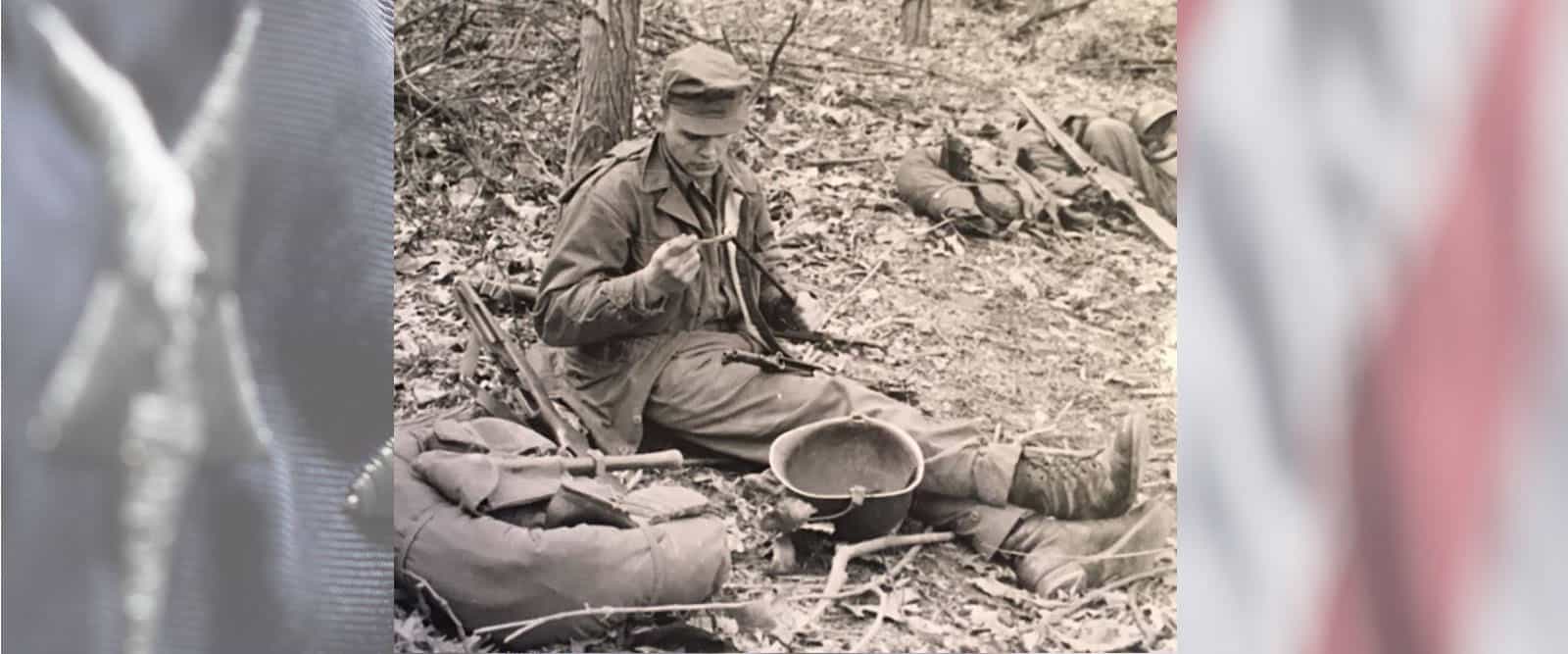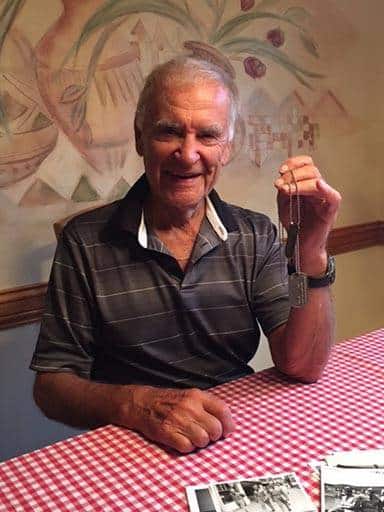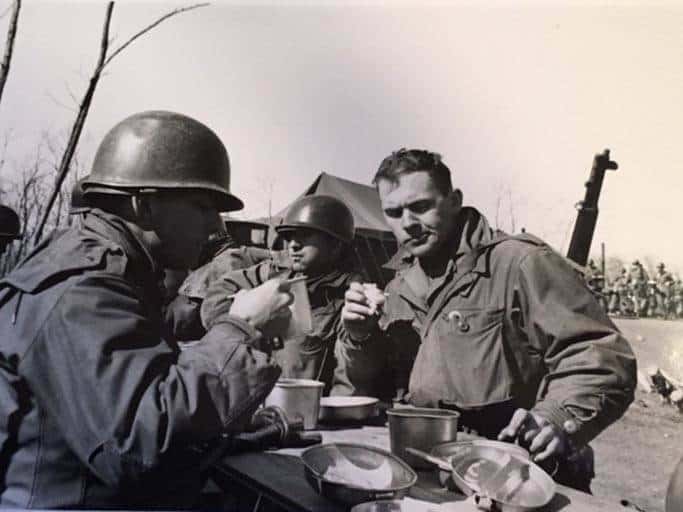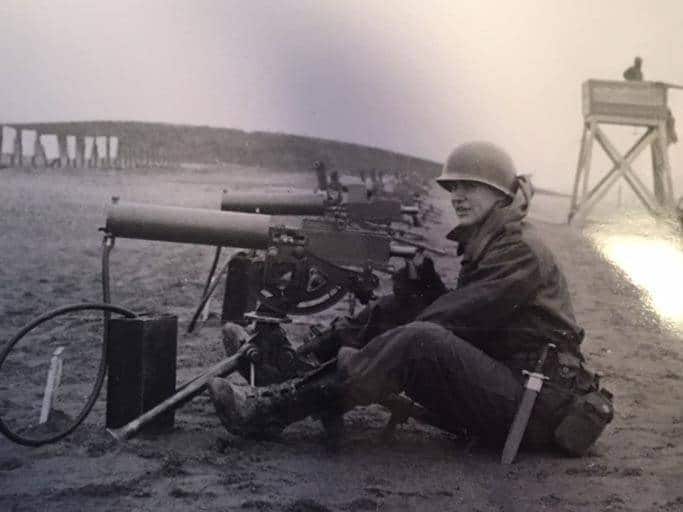U.S. Army Korean War Westmont, IL Flight date: 08/09/17
By Charlie Souhrada, Honor Flight Chicago Veteran Interviews Volunteer
Before Algis (Al) Vosylius’ 20th birthday, his family settled in Chicago after fleeing their home country of Lithuania several years before. Al was drafted two years later and sent back to the same part of the world he had left just a few years before. “We had a good life,” Al says. “Then the Russians attacked the Baltic countries – Estonia, Latvia and Lithuania – in June 1940, and everything changed.”
The Soviet annexation was followed by mass arrests and deportations. Al estimates more than 175,000 resistance leaders were put on cattle cars and sent to Siberia as part of a Russian plan to “denationalize” the population. (The family later learned that the entire family was on a list of people to be deported and narrowly escaped that fate by 72 hours.) In June 1941, Germany attacked the Soviet Union which led to the Nazi occupation of Lithuania and more unrest, deportations and mayhem.
In October 1944, with the Germans in retreat and the Russians coming back to reclaim the territory, the family decided it was time to run for safety. “My father was not prepared to go to Germany. There was no thought of that,” he says. “But there were air raids and we heard the tanks and decided it was time to cross the border. So, my father (Stasys), mother (Stase), older sister (Ruth), younger sister (Ilona) and I left by horse and wagon on a two-lane highway. On one lane were the refugees, like us, going west by the hundreds of thousands, and on the other side were the German troops coming back to blow up all the telephone installations and so forth before their retreat. It’s a miracle we got out!”
For the next five years, the family navigated through a series of refugee camps in the British Zone in Northern Germany and worked through the immigration process to go to the U.S. Eventually, the family’s paperwork cleared and Al traveled to America with his mother and younger sister on the USS General Sturgis, a small troop ship converted to transport war refugees. His father and older sister traveled to the U.S. separately, and eventually the family reunited and settled in Chicago where a large Lithuanian population had taken refuge. There, Al attended De La Salle High School and landed his first job at Wilson & Company in the Union Stock Yard unloading frozen cattle carcasses from rail cars for $1 an hour. “I did this for three months and then we found out the Wabash Railroad paid a little more, so I left and got $1.25 an hour unloading frozen veggies from rail cars!”
In November 1952, two years after arriving in the U.S., Al was drafted. “It was not a surprise, everybody knew it was coming. I was glad to go because I thought, ‘okay, adventure!’” Al’s military adventure began at Camp Breckinridge in Kentucky, for basic training with the 101st Airborne Division. There, he discovered he was a good shot on the firing range and developed a fondness for Twinkies. “In those days, we couldn’t get out too much so sometimes we sat around and ate Twinkies. That’s what I remember!”
After six months, he was shipped off to Fort Belvoir in Virginia to join the Engineer Officer Candidate School (OCS). “I had the option to sign up as an officer, but didn’t because it would have added another year to my service and I decided not to do that.” Instead, he was sent to Fort Bragg, North Carolina, for military intelligence training and waited for assignment. Ironically, when the orders finally came, he found himself headed back to Europe for a desk job at the V Corps Artillery Headquarters in Darmstadt, Germany. There, he lived in a former German army kaserne (barracks) and relied on typing skills, learned at a YMCA class in Chicago, to prepare V Corps paperwork and type artillery firing reports used to grade the battalions.
“It was ironic,” he laughs at the thought of being sent back to Germany after fighting so hard just a few years earlier to leave. “At the end of the war, in 1945, there was no food, nothing. In fact, we sold my mother’s gold dental bridge to a jeweler to get money to buy food! Then a few years later, here I am in a Wehrmacht building!” Another bit of irony came April 6, 1954, when Al received his U.S. citizenship on German soil. “A guy comes up and says, ‘Hey, put your desk uniform on.’ He put me in a jeep, drove me to the general’s office in Frankfort and I got my citizenship papers right there!”
Al remembers the field artillery firing range was 200 miles from the V Corps Headquarters and it was common practice to use the general’s car to travel to and from the range. Each time, the general’s driver took care to cover the general’s star on the license plate, in keeping with Army protocol. “One day, the driver, said ‘hey, let’s go to a bar!’ So, we went and overstayed! I thought, “Oh my God, we’re done!’” The driver removed the cover from the star on the plate and told Al to sit in the right-hand side of the back seat and pull his overcoat lapels up close to his face. Then, when the car rolled up to the V Corps gate, the guard looked at the driver, glanced at the passenger sitting in the dark rear seat and waved them through. Al doesn’t know what kind of punishment they would have received had they been caught. “Maybe they would have put us in jail or demoted us,” he says. “But, then again, I was a PFC and didn’t have that many stripes so there was not that much to lose!”
In November 1954, Al was discharged and headed back home to Chicago where his parents operated a grocery store in the Marquette Park neighborhood on the city’s southwest side. He helped in the store, earned his GED, then used the GI Bill to take college classes through the University of Illinois at Navy Pier. In 1959, he received a bachelor’s degree in geology from Southern Illinois University and started a career in photo geology and geophysical exploration working on contract for oil companies outside of Denver.
He quickly realized the job market in the field was limited and that he needed to do something else, so he enrolled in Thunderbird International School of Global Management. Upon completion, he built a second career in international business with a series of companies including Rockwell International, McGraw Edison and John Crane, Inc., a subsidiary of Smith Company/GB. Along the way, he earned an MBA from Loyola Chicago and married his wife, Janice, in 1971.
After an exciting career that took him to more countries than he can remember, he retired in 1997 and now lives in Westmont with Janice and their dog Kodi. His time is filled volunteering for the local VFW post, singing in his church choir and competing in international cross-country ski races through the Worldloppet Ski Federation.
Thank you for your service, Al! We hope you enjoy your Honor Flight!






